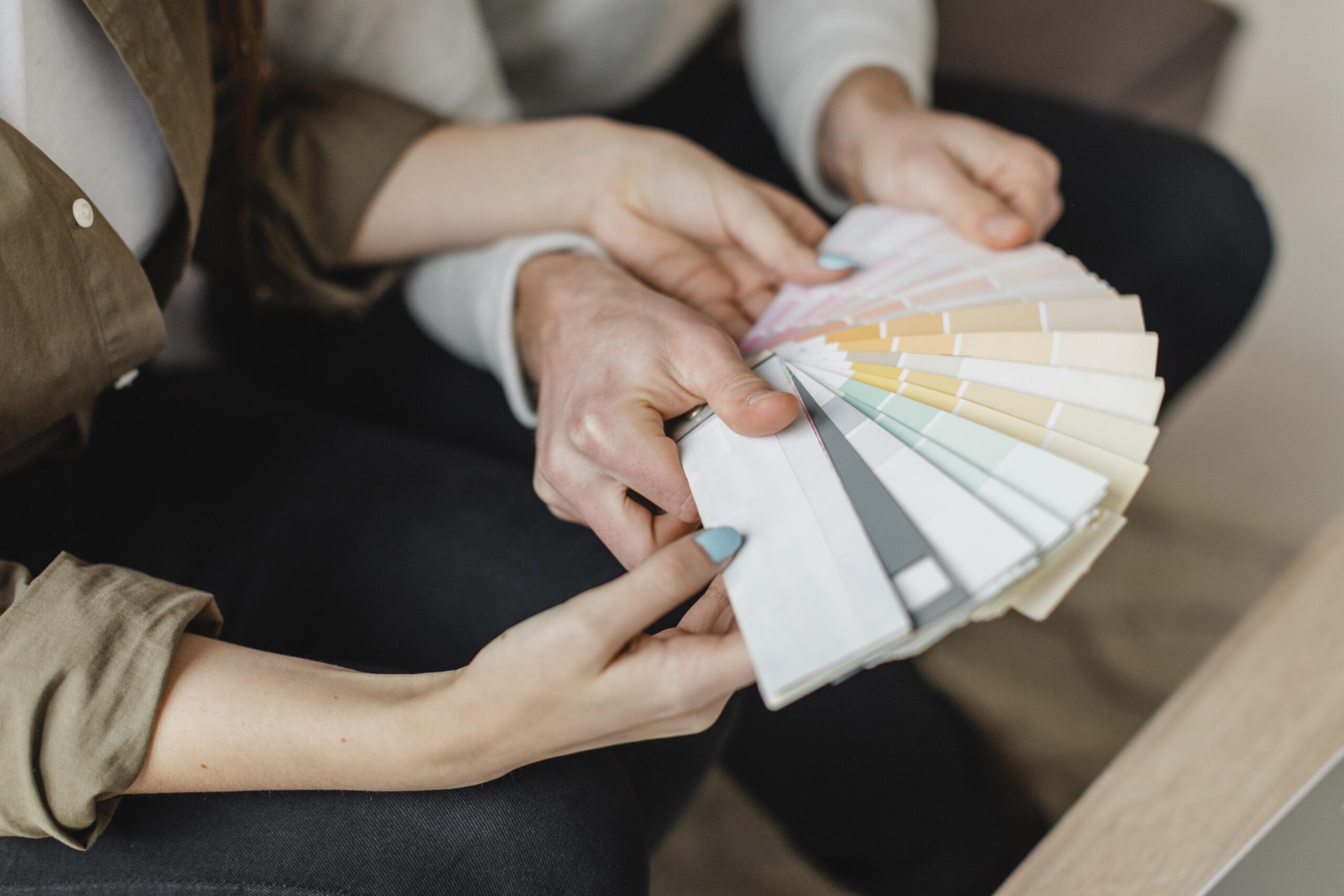Color is a powerful tool in interior design, capable of transforming spaces and influencing moods. Understanding the psychology behind colors can help you create environments that enhance well-being, boost productivity, and foster relaxation. Here’s a comprehensive guide to how different colors affect mood and how you can use them effectively in your home.
1. The Basics of Color Psychology
Color psychology is the study of how colors affect human behavior and emotions. Different hues can evoke a wide range of feelings and reactions, making them essential in creating the desired atmosphere in any room. Here’s a breakdown of some key colors and their psychological impacts:
2. Warm Colors: Energizing and Inviting
Red: The Color of Passion and Energy
- Effect: Red is known to stimulate energy, passion, and action. It can increase heart rate and enhance feelings of excitement and urgency.
- Best For: Use red in dining rooms or living areas where you want to stimulate conversation and activity. Avoid overuse in bedrooms, as it can be too stimulating for relaxation.
Orange: The Color of Creativity and Warmth
- Effect: Orange combines the energy of red and the cheerfulness of yellow. It promotes creativity, enthusiasm, and warmth.
- Best For: Ideal for kitchens, creative spaces, or any area where you want to inspire positivity and interaction. Use it as an accent color to avoid overwhelming the space.
Yellow: The Color of Happiness and Optimism
- Effect: Yellow is bright and cheerful, evoking feelings of happiness, warmth, and optimism. It stimulates the nervous system and can enhance mental clarity and concentration.
- Best For: Perfect for kitchens, studies, and living rooms. Use lighter shades to maintain a sunny, uplifting atmosphere without overwhelming the senses.
3. Cool Colors: Calming and Soothing
Blue: The Color of Tranquility and Trust
- Effect: Blue is calming, promoting peace, serenity, and stability. It is often associated with the sky and the ocean, evoking a sense of calm and relaxation.
- Best For: Great for bedrooms, bathrooms, and offices where you need to promote a peaceful and productive environment. Lighter blues are ideal for creating a serene atmosphere, while deeper blues can add sophistication.
Green: The Color of Nature and Balance
- Effect: Green is soothing and refreshing, symbolizing growth, harmony, and balance. It can help reduce stress and anxiety, making it ideal for relaxation spaces.
- Best For: Use green in living rooms, bedrooms, and bathrooms to create a calming environment. Plants and green decor can enhance the connection to nature, improving overall well-being.
Purple: The Color of Luxury and Creativity
- Effect: Purple is associated with luxury, creativity, and spirituality. It can stimulate the imagination and promote calmness, especially in lighter shades.
- Best For: Use purple in spaces dedicated to relaxation or creativity, such as bedrooms, studios, or reading nooks. Lavenders and violets are excellent for creating a serene, luxurious ambiance.
4. Neutral Colors: Versatile and Grounding
White: The Color of Purity and Simplicity
- Effect: White promotes cleanliness, simplicity, and purity. It can make spaces feel larger and more open, enhancing clarity and focus.
- Best For: Ideal for small spaces, kitchens, and bathrooms to create a fresh, clean look. Use white as a base color and add pops of color for visual interest.
Gray: The Color of Balance and Sophistication
- Effect: Gray is neutral and versatile, balancing other colors and creating a sophisticated, calming atmosphere. It can enhance other colors and make a space feel modern and timeless.
- Best For: Perfect for living rooms, bedrooms, and offices. Use varying shades of gray to add depth and texture without overwhelming the space.
Beige and Taupe: The Color of Comfort and Warmth
- Effect: Beige and taupe are warm, earthy tones that create a cozy, inviting atmosphere. They are versatile and can complement any color scheme.
- Best For: Ideal for living rooms, bedrooms, and family rooms. These colors provide a neutral backdrop that allows other colors to stand out.
5. Bold Colors: Statement-Making and Dynamic
Black: The Color of Sophistication and Mystery
- Effect: Black is powerful and dramatic, evoking sophistication and elegance. It can create a strong visual impact and add depth to a room.
- Best For: Use black as an accent color in living rooms, dining rooms, or home offices. It works well with other colors, adding contrast and drama.
Bright Colors (Pink, Turquoise, etc.): The Color of Playfulness and Energy
- Effect: Bright colors are vibrant and playful, injecting energy and creativity into a space. They can stimulate emotions and make rooms feel lively and fun.
- Best For: Use sparingly in spaces where you want to inject fun and energy, such as playrooms, kitchens, or creative studios. Accent pieces, like pillows or artwork, are great ways to incorporate bright colors.
6. Practical Tips for Using Color in Your Home
- Understand the Room’s Purpose: Choose colors that align with the function of each room. For instance, calming blues and greens are great for bedrooms, while energizing reds and yellows work well in living rooms and kitchens.
- Experiment with Accents: If you’re unsure about committing to a bold color, start with accessories like throw pillows, rugs, or artwork. This allows you to test different hues without making a permanent change.
- Balance Warm and Cool Tones: Mixing warm and cool colors can create a balanced and harmonious space. For example, combine blue with orange accents or green with pink accessories.
- Consider Lighting: Natural and artificial lighting can significantly affect how colors appear in your home. Test paint samples in different lighting conditions to see how they look throughout the day.
Final Thoughts
Understanding color psychology is essential for creating spaces that enhance mood, productivity, and relaxation. Whether you prefer calming neutrals or bold, vibrant hues, the right color choices can transform your home into a haven of comfort and style. Experiment with different shades and combinations to find the perfect palette that suits your personality and lifestyle. Happy decorating!
